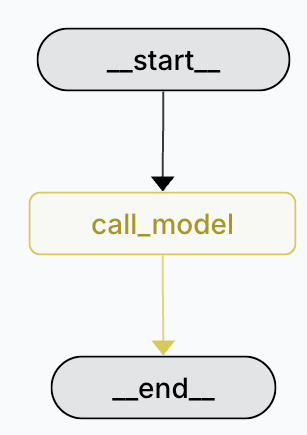langgraph快速搭建agent后端和react前端
官方文档
一、后端
1.安装基础依赖
pip install --upgrade "langgraph-cli[inmem]"
2.下载模版项目
在终端运行
langgraph new ./example --template new-langgraph-project-python
这里是在当前文件夹下新建文件夹example,里面是下载的langgraph模版项目文件

显示这样就是成功。如果失败,说明网络问题。
3.安装项目依赖
cd example
pip install -e .
4.配置项目环境变量
将.env.example文件修改为.env,这样就是环境变量文件了,重要的key都放在这里,和代码文件隔离
填写LANGSMITH_API_KEY,需要去langsmith注册账号,获取key
5.部署后端服务
langgraph dev
就会看到

6.核心代码
是src.agent.graph.py
"""LangGraph single-node graph template.Returns a predefined response. Replace logic and configuration as needed.
"""from __future__ import annotationsfrom dataclasses import dataclass
from typing import Any, Dict, TypedDictfrom langgraph.graph import StateGraph
from langgraph.runtime import Runtime# 上下文参数
class Context(TypedDict):"""Context parameters for the agent.Set these when creating assistants OR when invoking the graph.See: https://langchain-ai.github.io/langgraph/cloud/how-tos/configuration_cloud/"""my_configurable_param: str# 状态参数,定义输入参数
@dataclass
class State:"""Input state for the agent.Defines the initial structure of incoming data.See: https://langchain-ai.github.io/langgraph/concepts/low_level/#state"""changeme: str = "example"# 一个节点,接收state和runtime,返回output
async def call_model(state: State, runtime: Runtime[Context]) -> Dict[str, Any]:"""Process input and returns output.Can use runtime context to alter behavior."""return {"changeme": "output from call_model. "f"Configured with {runtime.context.get('my_configurable_param')}"}# 定义图
graph = (StateGraph(State, context_schema=Context).add_node(call_model).add_edge("__start__", "call_model").compile(name="New Graph")
)图形化后是

二、前端
官方文档
前置条件,在本地或者云端已经部署了langgraph的服务
然后本地安装前端项目,并启动
git clone https://github.com/langchain-ai/agent-chat-ui.gitcd agent-chat-uipnpm install
启动前端
pnpm dev
这样本地就有两个项目了

如果没有pnpm,就安装
brew install pnpm
三、最终效果
因为前端的显示是消息,所以要修改示例代码,我的简易代码
from typing import Annotatedfrom typing_extensions import TypedDictfrom langgraph.graph import StateGraph, START, END
from langgraph.graph.message import add_messagesclass State(TypedDict):# Messages have the type "list". The `add_messages` function# in the annotation defines how this state key should be updated# (in this case, it appends messages to the list, rather than overwriting them)messages: Annotated[list, add_messages]def call_llm(state: State) -> State:return {"messages": [{"role": "assistant","content": "你好,我是小爱同学,请问你是谁?"}]}graph_builder = StateGraph(State)graph_builder.add_node("call_llm", call_llm)graph_builder.add_edge(START, "call_llm")
graph_builder.add_edge("call_llm", END)graph = graph_builder.compile()

四、本地客户端访问langgraph服务
官方文档
代码
from langgraph_sdk import get_client
import asyncioclient = get_client(url="http://localhost:2024")async def main():async for chunk in client.runs.stream(None, # Threadless run"agent", # Name of assistant. Defined in langgraph.json.input={"messages": [{"role": "human","content": "hello",}],},):print(f"Receiving new event of type: {chunk.event}...")print(chunk.data)print("\n\n")asyncio.run(main())
效果

